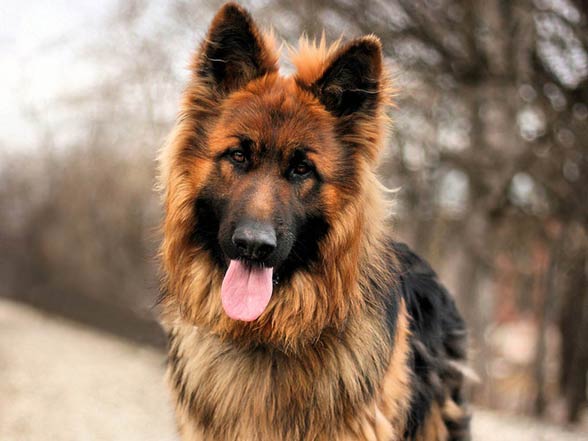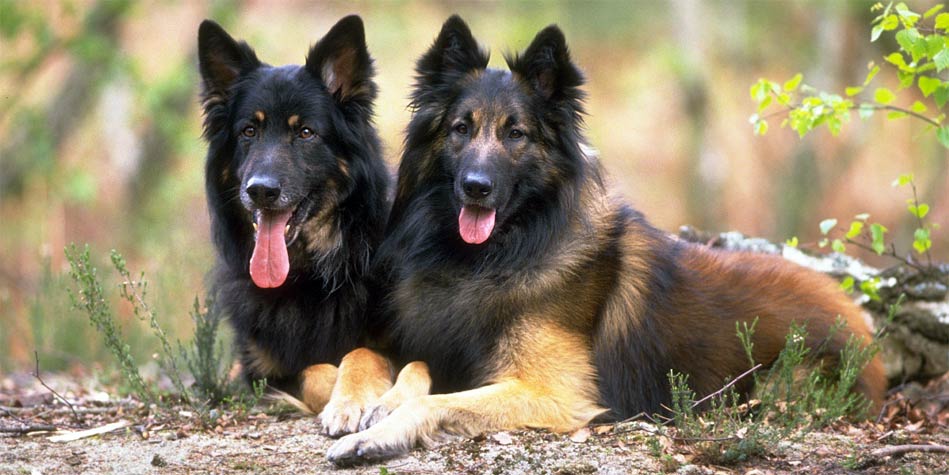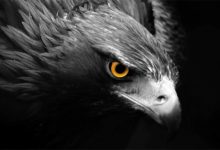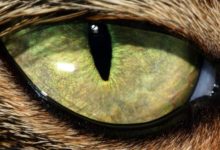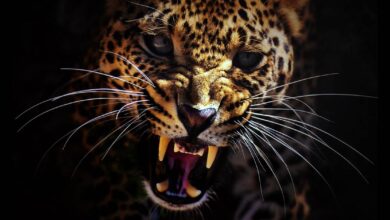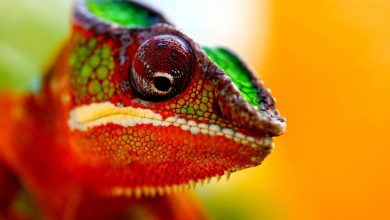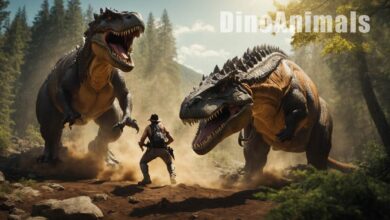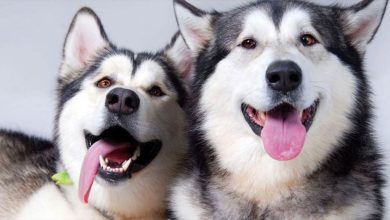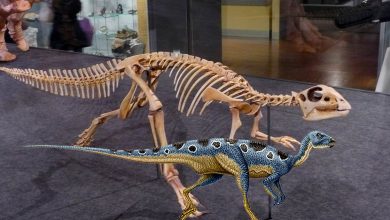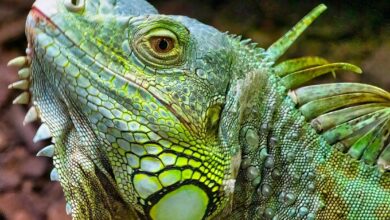Famous Strongheart, Rin Tin Tin, K-9 or Inspector Rex are not just made-up creations. The German Shepherd is in fact a great friend and an excellent guard dog.
FCI classification
- Group 1 – sheepdogs and herding dogs
- Section 1 – sheepdogs
- With working trial.
German Shepherd’s variations
Short-hair variation (Stockhaar)
It has a thick, harsh and close to the body coat. The shortest hair is on its head, ears, front side of its legs and paws. The longest hair is on its neck and on the back side of its limbs (those are so called “pants”).
Long-hair variation (Longstockhaar)
It has long, soft coat that does not adhere strongly to the body. The longest hair is on its ears and limbs. It has a broad tail. The shortest hair grows on its head, inside its ears and on the front side of its legs and paws. The hair creates a characteristic ruff around the neck. Its “pants” on the back side of the limbs seem to be thicker than in the short-hair variation.
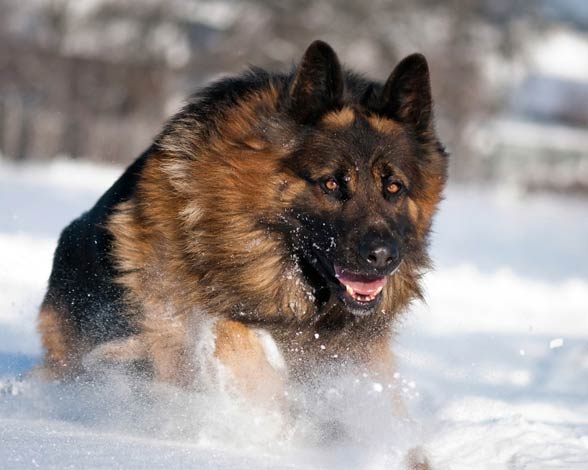
Origin
In 1850 in Europe the attempts were made to standardize dog breeds. The most important was to preserve the traits contributed to their job of herding and protecting sheep against predators. This standardization was practiced locally in Germany. The traits that were required the most were intelligence, speed, strength and a keen sense of smell. Even though the breeders were able to breed such dog, there were still some differences in the dog’s appearance and skills.
In order to eliminate those differences, Phylax Society decided in 1891 to create standardized development plans for the native dog breeds in Germany. The society was disbanded after 3 years due to the internal conflicts regarding the dog traits that should be promoted. According to some members, the dogs should be bred solely for working purposes. The others requested that the breed was as well homogenous look wise. Although the society did not achieve its goal, standardization of dog breeds was continued.
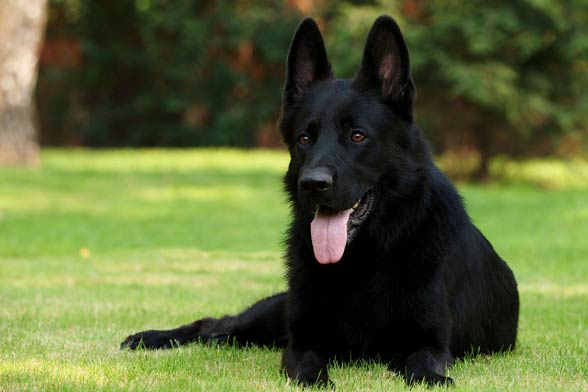
With the development of the big industrial cities, a population of predators in Germany decreased. As a result, sheepdogs become unnecessary. At the time, the awareness about German Shepherd’s intelligence and versatility spread.
Max Emil Friedrich von Stephanitz, a cavalry captain as well as a former student of the Berlin Veterinary College and a former member of Phylax Society, sustained that the dogs should be bred solely for working purposes. However, he admired as well German Shepherds’ skills and strength. He failed to find a breed that would act as an excellent working dog breed.
In 1899 Stephanitz was showed a dog called Hektor Linksrhein, which was bred by means of the selective breeding of several generations of dogs. The dog met entirely his expectations. He was delighted by its intelligence, loyalty towards its owner and its beauty. Stephanitz decided to buy the dog right away and after having purchased it, he changed its name to Horand von Grafrath. Afterwards, he founded the Verein für Deutsche Schäferhunde (Society for the German Shepherd Dog). Horand is considered the first German Shepherd and the first dog to be registered by the Society.’
Horand became a genetic base for the breeding programs as it was bred with the dogs from Thuringia, Franconia and Wurttemberg. He fathered many pups, including Hektor von Schwaben which was considered the most successful one.
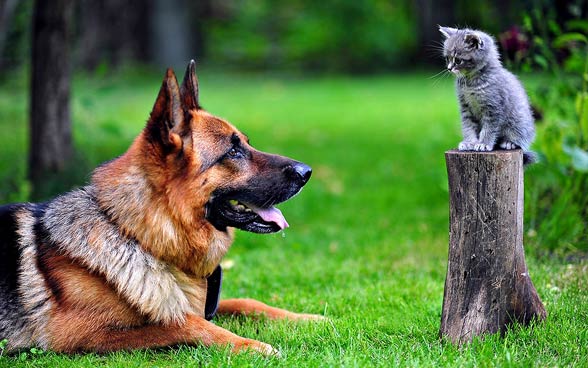
The name
The breed’s name Deutscher Schäferhund was established by Stephanitz and translates literally to “German Shepherd Dog”. The name is taken after the dog’s original purposes as herding dog and sheepdog. At the time, all other herds had the same name, therefore the name of German Shepherd was changed into Altdeutsche Schäferhunde, that translates literally into “Old German Shepherd Dogs”.
A literal translation of the name became its official name in the register. However, after the World War I it was believed that the inclusion of the word “German” which had a negative connotation at the time would harm the breed’s popularity. Due to the anti-German sentiments, UK Kennel Club changed the name into “Alsatian Wolf Dog”. The name was taken after the French region Alsace bordering Germany. This name was accepted by many other international breeding societies.
Finally, the breeders started protesting against the name “Wolf Dog” that according to them suggested that the breed constitutes a hybrid between a dog and a wolf. They claimed that it would harm its popularity and legal propagation. Nonetheless, the term “Alsatian” had still been functioning for a long time. It was not until 1977 when under the pressure of the dogs’ fanciers and the UK breeding clubs, the name “German Shepherd” was brought back into use.
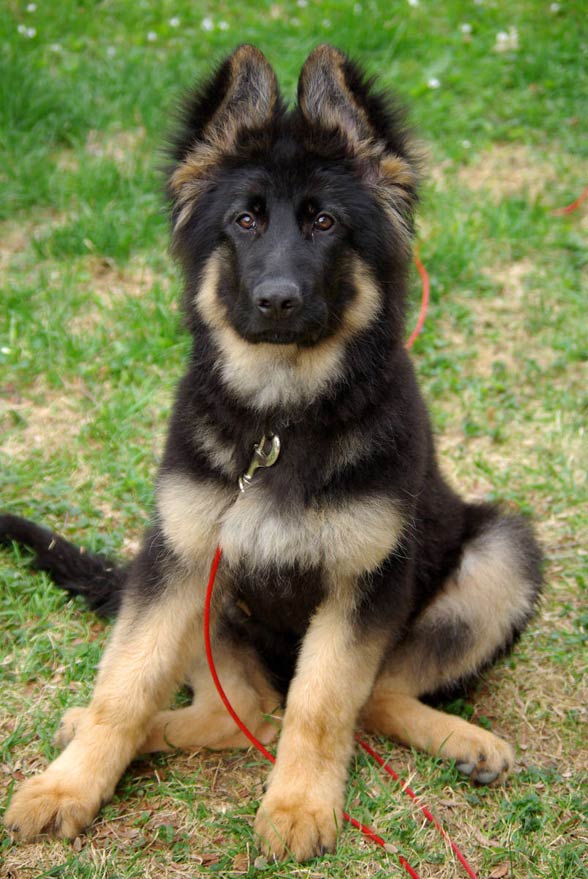
Characteristics
Appearance
German Shepherd’s average height at shoulders is 60 to 65 cm (23.6 to 25.6 in) for males and 55 to 60 cm (21.6 to 23.6 in) for females. The males’ weight achieves 30 to 40 kg (66 to 88 lb) and females’ 22 to 32 kg (48.5 to 70.5 lb).
Its forehead is domed and a muzzle is long and square-cut. A nose is big and black. It has strong jaws and a scissor bite (incisor teeth in the upper jaw are in contact with but slightly overlap those in the bottom jaw). It has medium-sized and brown eyes which have an original spark and reflect German Shepherd’s intelligence and self-confidence.
Its ears are large and stand erect. They are open at front and tend to pull back when the dog moves. It raises its long neck to show an excitement and lowers it while moving in a quick pace. Its bushy tail reaches a hock point.
German Shepherd’s coloration is quite various. The most popular one is a mix of yellow-brown, black or red and black. The majority of variations has a black mask (a muzzle and eyes) and large black patches that can range from a “saddle” to a “blanket”. There are also rarer colorations including pure-black, pure-white, red-brown (liver) and blue. The black and sable varieties are accepted according to standards. The blue and liver ones are considered to be faults. The pure-white German Shepherds are disqualified from the shows.
German Shepherd has two-layered coat. An external layer adheres closely to the body and is thick and harsh. The internal layer is so called undercoat. There are two types of hair: short and long. A gene responsible for a long hair is recessive, therefore the longhair variation is rarer.
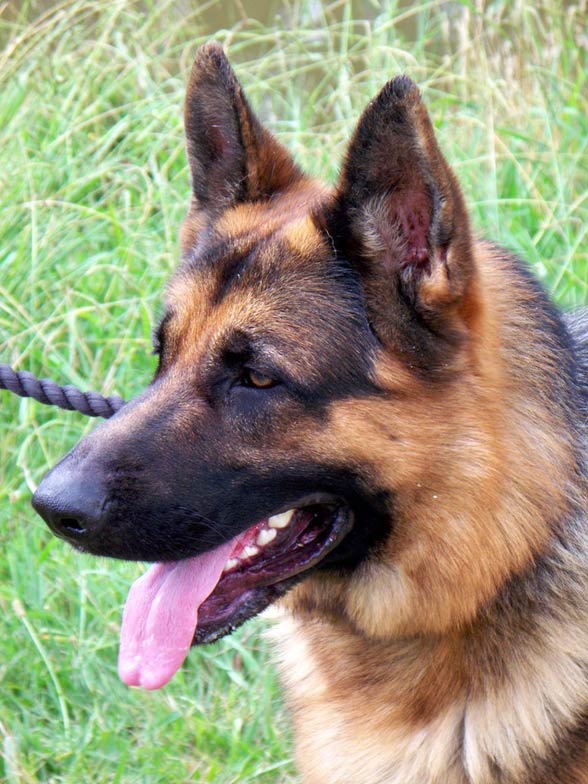
Behavior
Intelligence
German Shepherd is known for its intelligence. In his book The Intelligence of dogs, Stanley Coren ranked German Shepherd the 3rd most intelligent dog breed, right after Border Collies and the Poodles. Coren carried on an experiment that proved that a German Shepherd is able to perform a task after only five repetitions. Moreover, the dogs obeyed the first command given 95% of the time. Its intelligence together with a strength makes the breed suitable for work in the police, in the fire brigade, as well as a guard, search and rescue dog as it is able to learn quickly and to understand command better than other breeds.
Temperament
Herman Shepherd is active and self-confident dog. It likes to learn and to be challenged. As a very curious dog, it is great as a sheepdog and a herding dog. However, it may become overprotective when it comes to its family as well as it territory, especially if not socialized correctly. Although it is reluctant to bond with strangers, it is smart and obedient.
Aggression
Well-trained and socialized German Shepherds are considered harmless. However, in the USA it was estimated that German Shepherds bite the most often. Moreover, they are aggressive towards smaller dogs. According to the report prepared in 1999 in Australia, German Shepherds are 3rd breed to attack people the most often in some Australian regions.
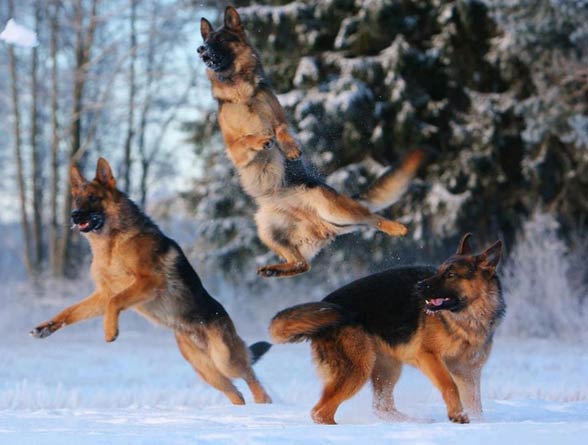
As a working dog
German Shepherd are very helpful working dogs, especially for the police. They are used for tracking criminals, patrolling troubled areas and detecting suspicious substances. Moreover, thousands of German Shepherds have been used by the military. They have performed a scout duty, warn soldiers of the presence of enemies, of booby traps or other hazards.
German Shepherds have also been trained by military groups to parachute from aircraft or as anti-tank weapons. During the World War II they acted as messenger dogs, rescue dogs and personal guard dogs. A lot of those dogs were taken home after the war by the soldiers who cooperated with them, as they were impressed by their intelligence and they created a bond with them.
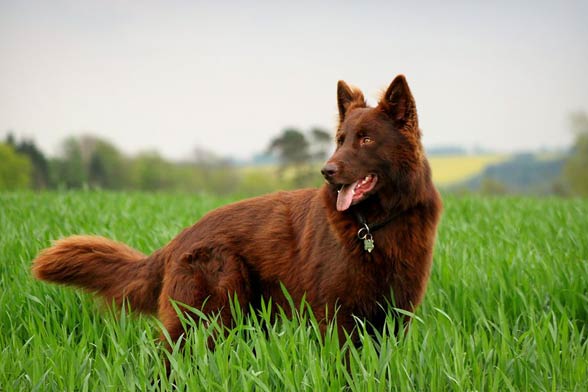
Today, German Shepherd is one of the most often trained breed. They are trained to be the guard dogs, to cooperate with the police (to search corpse or detect drugs) or with the fire brigade and to be a sapper. They have a keen sense of smell which is simultaneously resistant to other smells that may disrupt it, which is why they are great at searching.
In 1920s German Shepherds started being used as guide dogs for the visually impaired. The research has shown that German Shepherds major in healthy aggression and defensive behavior towards strangers in comparison to Golden Retrievers and Labrador Retrievers which were more emotionally stabile and better in emergency situations. It indicated that Golden and Labrador Retrievers are more suitable for cooperation with the disabled while German Shepherd was perfect to work with the police.
German Shepherds are still used to herd sheep grazing next to the crops. Apart from guarding, it also oversees the boundaries that sheep are not allowed to trespass, otherwise they may destroy the crops growing near them. In Germany, the utility tests called HSH (Herdengebrauchshund) are held to test the dogs’ skills.

Detailed information / size
German Shepherd
- Height at shoulders: males 60 to 65 cm (23.6 to 25.6 in) females 55 to 60 cm (21.6 to 23.6 in) (the body length is slightly bigger than the height)
- Weight: males 30 to 40 kg (66 to 88 lb); females 22 to 32 kg (48.5 to 70.5 lb)
- Life span: approximately 10 years (max. 13 years)

German Shepherd – curiosities
- German Shepherds’ ancestors were produced through inbreeding, therefore the breed is prone to many different diseases, including hip and elbow dysplasia that cause arthritis, degenerative myelopathy, neurological diseases. They are also prone to von Willebrand disease (coagulation abnormality) more than other breeds.
- A word “wolf dog” has still been used in brackets in official texts until 2010.
- German Shepherds are the second most popular dog breed in the USA and the fourth in the UK.
- According to National Geographic, German Shepherd can clench its jaws with a force of 1600N (Rottweiler do it with a force of 1180 to 1460N, pit bulls 1050N, Labradors 1000N and a human 380N).
- The UK Kennel Club created the German Shepherd register. In 1919 there were only 54 registered German Shepherds and in 1926 there were already 8000 of them. German Shepherd gained an international recognition after the World War I. It was due to such dog stars as Rin Tin Tin or Strongheart that contributed to the propagation of the breed.
- German Shepherd’s body structure is perfectly well suited for athletic competitions. They take part in agility trials (a dog takes commands from its owner and is supposed to overcome obstacles).
- In 2013 German Shepherds constituted 15% of all trained dogs in Guide Dogs of America. The rest constituted Labradors and Golden Retrievers.
- Czechoslovakian Wolfdog is a crossbreed of a German Shepherd and a wolf.
